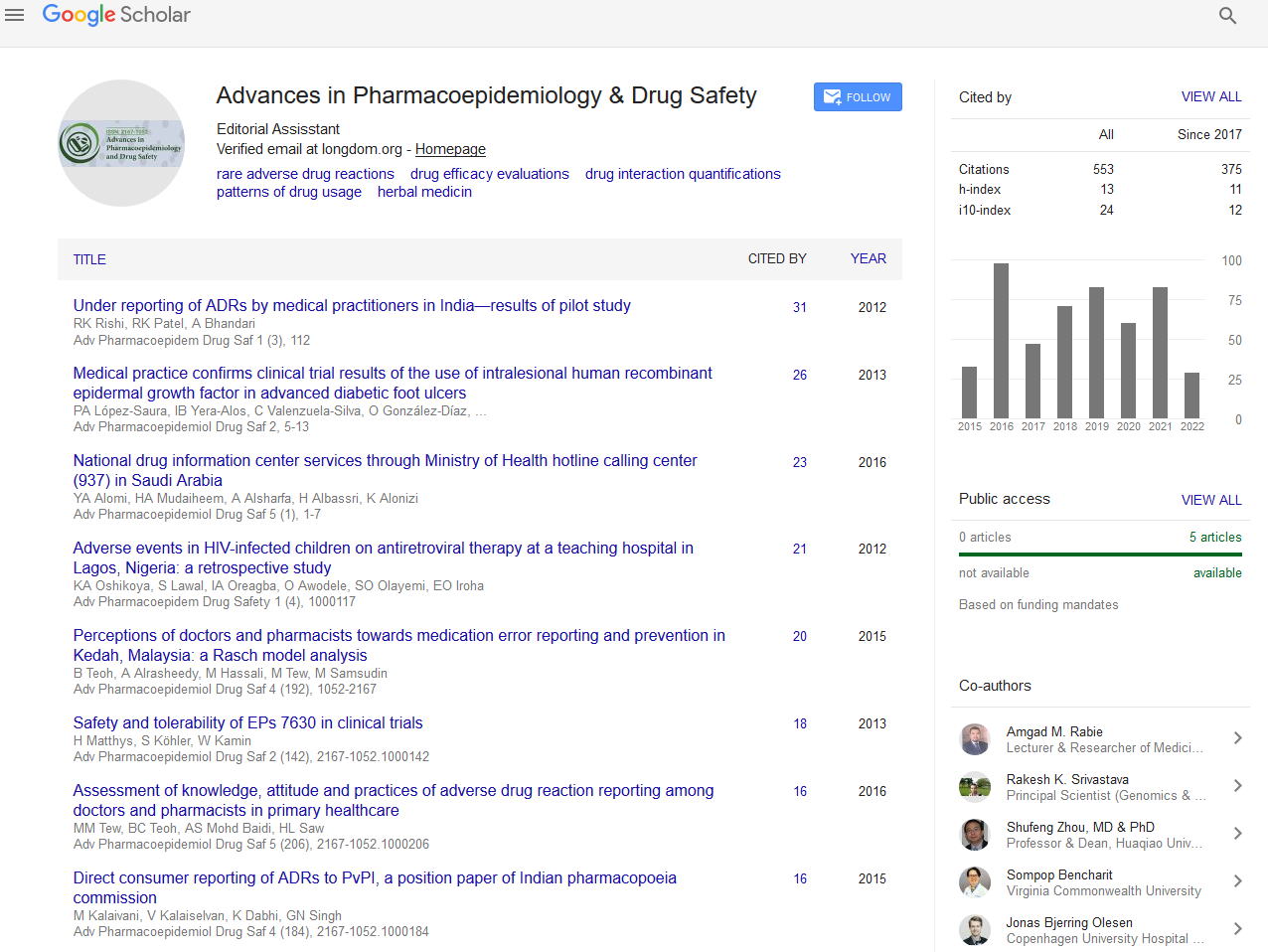Indexed In
- Open J Gate
- Genamics JournalSeek
- Academic Keys
- JournalTOCs
- RefSeek
- Hamdard University
- EBSCO A-Z
- SWB online catalog
- Publons
- Geneva Foundation for Medical Education and Research
- Euro Pub
- Google Scholar
Useful Links
Share This Page
Journal Flyer

Open Access Journals
- Agri and Aquaculture
- Biochemistry
- Bioinformatics & Systems Biology
- Business & Management
- Chemistry
- Clinical Sciences
- Engineering
- Food & Nutrition
- General Science
- Genetics & Molecular Biology
- Immunology & Microbiology
- Medical Sciences
- Neuroscience & Psychology
- Nursing & Health Care
- Pharmaceutical Sciences
Abstract
Are Radiopharmaceuticals Safe? The Case of FDG-18
Ralph Santos-Oliveira and Brandon Fleming
Too many false-positive and adverse reactions related to radiopharmaceuticals take place every day in hospitals routine, but many are not reported or even sensed. Information concerning these kind of reactions is not abundant and nuclear medicine staff is usually overwhelmed by this information. As every healthcare intervention carries some risk of harm, clinical decision making needs to be supported by a systematic assessment of the balance of benefit to harm. A systematic review that considers only the favorable outcomes of an intervention, without also assessing the adverse effects and false positives reactions, can mislead by introducing a bias favoring the intervention that in the case o radiopharmaceuticals may to render a important factor related not even to the quality of the drug but even to the quality of the diagnosis. The results suggest a logical framework to make decisions in reviews that incorporate false positive and adverse reactions. Also, was explored situations where a comprehensive investigation of false positive reactions and adverse effects was warranted and suggest strategies to identify practicable and clinically useful outcomes. We concluded that there is the necessity to include and to recognize how strategic choices made in the review process determine what harms are found, and how the findings may affect clinical decisions. Researchers undertaking a systematic review that incorporates false positive reaction and adverse reactions must understand the rationale for the suggested methods and be able to implement them in their review. Beyond a world effort should be made to report as many cases of false positive and adverse reactions with radiopharmaceuticals as possible. Only if this is done a complete picture of false positive reactions with radiopharmaceuticals can be drawn.


